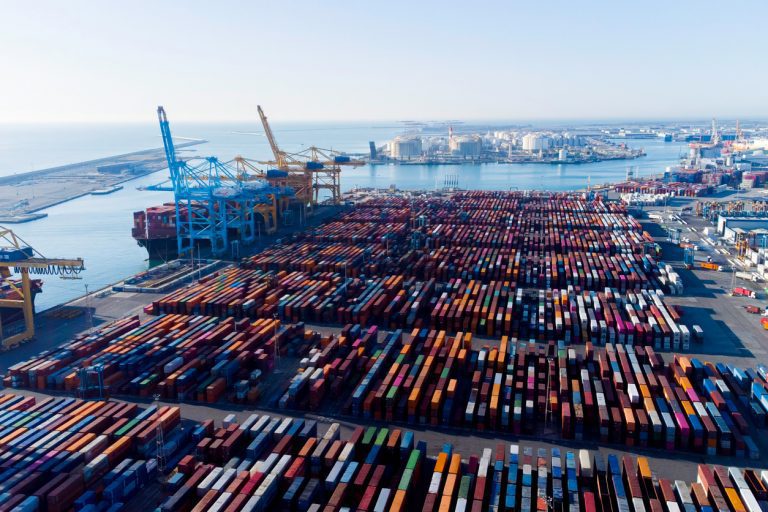Blog Post
Navigating Tariffs with a Resilient Fleet Strategy
By Tom Sloan
April 23, 2025

In 2025, U.S. trade policy has undergone one of its most sweeping transformations in decades. With the imposition of new tariffs on automobiles, auto parts, steel, aluminum, and a wide array of foreign imports, fleets are facing a sudden recalibration of cost structures, procurement practices, and operational strategies.
A New Era of Tariffs
Since February 2025, the White House has rolled out a series of transformative trade measures, aimed at reducing trade deficits, curbing fentanyl-related imports, and restoring domestic manufacturing. As of this posting, three categories of tariffs are particularly consequential to fleet managers:
- Automobile Tariffs: As of April 3, a 25% tariff applies to all imported vehicles, including those from U.S. neighbors Canada and Mexico. This follows the expiration of the USMCA automatic exemption on April 2. USMCA-compliant vehicles may face partial tariffs if they contain non-U.S. built components. Importers of automobiles under the USMCA will be given the opportunity to certify their U.S. content and systems will be implemented such that the 25% tariff will only apply to the value of their non-U.S. content. If Customs and Border Protection determines that the declared non-U.S. content of a USMCA-qualifying automobile has been understated, the 25% tariff will apply retroactively and prospectively to the full value of the affected model.
- Parts and Components: By May 3, all imported automotive parts—including tires, brakes, sensors, and EV batteries—will be subject to a 25% tariff. This impacts maintenance costs, repair timelines, and parts inventory for nearly all fleet types.
- Steel and Aluminum: On March 12, a 25% tariff was placed on all imported steel and aluminum, driving up the cost of trailers, upfits, and commercial-grade vehicle builds reliant on lightweight or specialty metals.
- Baseline Tariff: As of April 5, a 10% universal tariff applies to nearly all imports.
- China – The current tariff for China is 145%.
Additionally, two other measures may have significant impact on fleets:
- The De Minimis Exemption Removal for China: Effective May 2, the U.S. will eliminate duty-free status for low-value shipments (under $800) from China and Hong Kong—affecting accessories, telematics hardware, and spare parts often sourced via bulk e-commerce.
- Reciprocal Tariffs: On April 9, the individualized country-specific tariffs of up to an additional 54% that were poised to take effect on goods from Vietnam, South Korea, the EU, and others were paused for 90 days (China was excluded from the pause). These affect electronics, uniforms, charging equipment, and more.
- Electronics Exemptions: As of April 5, certain electronics were exempted from the 25% tariffs, but are still included in the 10% baseline tariff – specifically smartphone, laptops and certain semi-conductors are included in this pause which is expected to be short-lived.
Impact on Fleet Operations
The fleet sector is particularly vulnerable to these changes. For fleet managers, these new conditions could mean tighter budgets, longer procurement timelines, and a need to reassess sourcing strategies, lease structures, and asset life cycles. Staying competitive now requires a shift toward more strategic maintenance planning, closer collaboration with suppliers, and scenario-based budgeting to absorb tariff-driven volatility. We encourage all of our clients to collaborate with their Wheels support teams. Despite the challenges, fleet managers can take several steps to mitigate the impact of these new tariffs:
- Audit and Diversify Supply Chains – Consider alternate sourcing from tariff-neutral regions or domestic suppliers—even if short-term costs are higher, long-term stability may be improved.
- Extend Vehicle Life Cycles – You may need to delay new vehicle purchases where possible. This would mean improving preventive maintenance schedules and monitoring performance metrics to safely extend fleet turnover cycles. This allows more time for tariff environments to stabilize.
- Optimize Upfitting and Trailer Procurement – Review upcoming upfitting projects. Consider ordering standardized upfits in batches to lock in pricing before further steel cost increases.
- Rely on Your Wheels Team – Create a strategy and model various cost scenarios under potential tariff escalations or retaliatory actions by Canada, Mexico, or the EU. Budget buffers are essential for FY2025.
Supporting our Clients through Ongoing Change
We recognize that these developments introduce complexity into vehicle sourcing, pricing, and timing. Our teams are actively collaborating across functions to support you through these changes. While information continues to evolve, here’s how we’re working together across our teams of experts:
- Procurement – Our procurement team works closely on a daily basis with OEMs, suppliers, and other supply chain partners to maintain strong lines of communication and gather as much information as possible. Updates are provided on our tariff hub.
- Analytics – Our analytics team plays a critical role in navigating the evolving tariff landscape. With a focus on enabling confident, data-driven decision-making, we are tapping into a wide range of resources—from internal data and supplier input to OEM and external partners insights.
Our experts, including seasoned analysts and data engineers, are continuously identifying areas of potential impact and opportunity. This includes evaluating procurement strategies, optimizing fleet composition, and assessing cost implications. We are also developing tailored policy evaluations and practical recommendations to help our clients adapt swiftly and strategically. Our goal is to equip you with the insight that you need and work off a tailored playbook to make informed choices in a shifting environment.
- Client Management – Our teams are available to review your strategies and support decision-making. We encourage you to work directly with your Wheels representative to navigate this environment effectively.
Your Wheels Partnership
The 2025 tariff wave is more than a policy shift—it creates a mandate for operational resilience. For corporate and commercial fleets, there could be some challenges this year, but by partnering with Wheels for strategic foresight, collaborating with suppliers, and agile planning, you can steer through the disruption and find new efficiencies in a changing economic landscape.
This post will be updated as events evolve.

VP Client Management